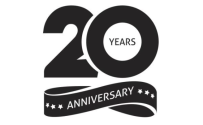Electronics Glossary
Distributors of Commercial, Industrial, Medical, Automotive, and Hi-Rel Electronic Components
| Term | Definition |
|---|---|
| 10 BASE-T | 10BASE-T, one of several physical media specified in the IEEE 802.3 standard for Ethernet local area networks (LANs), is ordinary telephone twisted pair wire. 10BASE-T supports Ethernet’s 10 Mbps transmission speed. In addition to 10BASE-T, 10 megabit Ethernet can be implemented with these media types: • 10BASE-2 (Thinwire coaxial cable with a maximum segment length of 185 meters) • 10BASE-5 (Thickwire coaxial cable with a maximum segment length of 500 meters) • 10BASE-F (optical fiber cable); -FB is for fiber backbone; -FL is for fiber link between concentrator and station; -FP for passive star coupler • 10BASE-36 (broadband coaxial cable carrying multiple baseband channels for a maximum length of 3,600 meters) This designation is an Institute of Electrical and Electronics Engineers (IEEE) shorthand identifier. The “10” in the media type designation refers to the transmission speed of 10 Mbps. The “BASE” refers to baseband signaling, which means that only Ethernet signals are carried on the medium. The “T” represents twisted-pair; the “F” represents fiber optic cable; and the “2”, “5”, and “36” refer to the coaxial cable segment length (the 185 meter length has been rounded up to “2” for 200). |
| 1000BASE-T | A recent LAN standard for implementing 1000 Mbps Ethernet on Category 5 cable. Transmission technology based on the Ethernet frame format and protocol used in local area networks (LANs), provides a data rate of 1 billion bits per second (one gigabit). Gigabit Ethernet is defined in the IEEE 802.3 standard and is currently being used as the backbone in many enterprise networks. Gigabit Ethernet is carried primarily on optical fiber (with very short distances possible on copper media). Existing Ethernet LANs with 10 and 100 Mbps cards can feed into a Gigabit Ethernet backbone. An alternative technology that competes with Gigabit Ethernet is ATM. A newer standard, 10-Gigabit Ethernet, is also becoming available. |
| 100BASE-T | In 100 Mbps (megabits per second) Ethernet (known as Fast Ethernet), there are three types of physical wiring that can carry signals: • 100BASE-T4 (four pairs of telephone twisted pair wire) • 100BASE-TX (two pairs of data grade twisted-pair wire) • 100BASE-FX (a two-strand optical fiber cable) This designation is an Institute of Electrical and Electronics Engineers shorthand identifier. The “100” in the media type designation refers to the transmission speed of 100 Mbps. The “BASE” refers to baseband signaling, which means that only Ethernet signals are carried on the medium. The “T4,” “TX,” and “FX” refer to the physical medium that carries the signal. (Through repeaters, media segments of different physical types can be used in the same system.) The TX and FX types together are sometimes referred to as “100BASE-X.” (The designation for “100BASE-T” is also sometimes seen as “100BaseT.”) |
| 110 connector | A popular insulation displacement connector (IDC) used modular jacks, patch panels and cross connects. |

